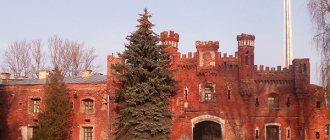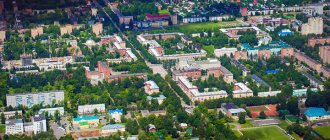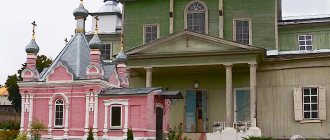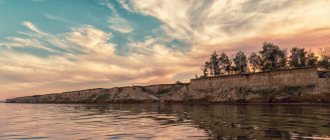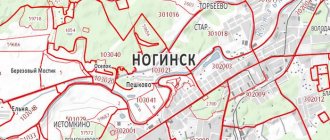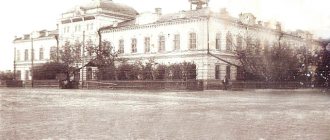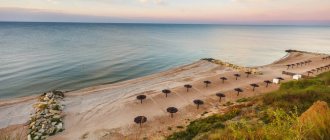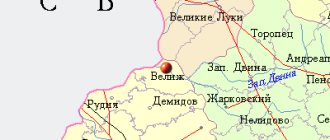Brest
The city of Berestye , which spreads over the Bug, was first mentioned in the Tale of Bygone Years in 1019. Over the centuries Brest , which is called the western gate of Belarus, more than once became part of different states, was destroyed and rebuilt again: hence its “saturation” with evidence of different eras - from the ancient settlement of Berestya to the surviving buildings of imperial Brest-Litovsk, Polish Brest-on-Bug .
Today the city is a favorite tourist destination. the railway station built by order of Alexander II , which was considered the largest and most beautiful in the Russian Empire; local “Arbat” - pedestrian Sovetskaya with its constant lamplighter lighting ancient gas lamps; Gogol Street , where you can meet many characters from the immortal works of the classic; the Millennium Monument of Brest - a circular high relief with real historical figures and generalized images of city residents under the protection of the Guardian Angel; Museum of Railway Equipment , opened after reconstruction on the day of the 999th anniversary of Brest .
Story
Brest is the third oldest city in Belarus after Polotsk (862) and Turov (980). It was first mentioned in the Tale of Bygone Years in 1019 as a large, well-fortified settlement.
At the very beginning of its history, it was the cause of constant conflicts between the Principality of Poland and Kievan Rus, and later – the Principality of Galicia-Volyn and the Grand Duchy of Lithuania.
Important trade routes that connected Western Europe with the Middle East and the Black Sea region passed through the Brest region. In the 14th century it became part of the Grand Duchy of Lithuania, and then the Polish-Lithuanian Commonwealth.
In 1596, a church union was signed in Brest, which united Orthodox and Catholics. The uprising of 1794, provoked by the next division of the Polish-Lithuanian Commonwealth, broke out in the territory of the future Brest region. After his defeat, administrative reform was carried out. Brest, as a county town, at different times was part of different provinces: Slonim (since 1794), Lithuanian (since 1797) and Grodno (since 1801).
A landmark event was the construction of the Brest Fortress, which began in the 1830s. It was to become one of the largest and most modern fortifications in the world. At the same time, old Brest was destroyed - it actually had to be rebuilt in another place.
At the same time, a whole network of new roads emerged. Its further development led to the emergence of the Brest-Moscow highway, as well as the Moscow-Brest railway. Thanks to them, not only did transport connections with other cities of the Russian Empire improve, but also new markets opened, which contributed to the development of the local economy. By the beginning of the twentieth century, Brest had turned into a prosperous city, whose population was constantly increasing (including due to visitors).
The beginning of the First World War became a difficult test for the entire population of the Brest region. The fortress did not help contain the Kaiser's troops. The occupation began, which forced many local residents to become refugees. As the front passed through the Brest region, many settlements were destroyed during heavy positional battles. Military cemeteries, as well as fortifications that have been preserved along the Oginsky Canal and in many other places, remind of those events.
A peace treaty between the Soviet and German governments was concluded near Brest in the village of Skokie. As a result of the Soviet-Polish war, the Brest, Kamenets and Malorita regions became part of the Polesie voivodeship. Only in 1939 this territory was annexed to the BSSR. Soon the Brest region was formed.
The heroic defense of the Brest Fortress will forever go down in the history of World War II. However, the territory of the region itself was captured soon after it began. Only on July 28, 1944, the troops of the First Belorussian Front finally liberated the Brest region. The following years were marked by industrialization. Draining the swamps made it possible to increase agricultural output, but at the same time seriously changed the nature of these places.
Brest Hero Fortress
At the beginning of the Great Patriotic War , the main citadel of Belarus was the first to take the blow and held back the onslaught of the Nazi invaders for 28 days. In honor of the defenders of the fortress memorial complex was erected , in the center of which there was “Courage” monument depicting a warrior and a banner. A unique open-air architectural and sculptural ensemble tells about the events of the heroic defense. Here you can see a 100-meter bayonet-obelisk - a symbol of victory over the enemy, honor the memory of those who fell on Ceremonial Square , visit the Museum of Defense of the Brest Fortress , and visit the site of one of the oldest stone buildings of old Brest-Litovsk - the White Palace .
On the territory of the fortress in 1851-1876, the St. Nicholas Garrison Cathedral - a majestic basilica in the Byzantine style, one of the most beautiful churches in the center of Europe. At the beginning of the war, it became an important point in the defense of the fortress.
Brest, Memorial complex "Brest Hero Fortress"
The museum is open from 9.00 to 18.00, closed on Mondays. Excursions around the territory - daily.
Archaeological Museum "Berestye"
museum of a medieval East Slavic city in Europe is located on the territory of the Brest Fortress Berestye was born many centuries ago before its appearance . In 1968, at a depth of 4 meters, scientists discovered a craft quarter - dozens of wooden buildings from the 11th to 13th centuries, street pavements and palisades, and the remains of adobe ovens. Today, in a unique museum, where a pavilion was built over the excavation site of an ancient settlement, you can see archaeological finds of the 11th-14th centuries , telling about the life of the Slavic city, the development of crafts and trade, and the life of the inhabitants. Among them are absolutely unique artifacts: an oak rawl of farmers, a boxwood comb with carved Cyrillic letters...
Brest Fortress, Hospital Island
From 10.00 to 18.00 (March - October, seven days a week), from 10.00 to 17.00 (November - February, weekends - Monday, Tuesday)
description
Brest region is located in the southwestern part of Belarus.
It has a common border with Ukraine and Poland. The territory of the Brest region belongs to the Pripyat and Pribuzhsky Polesie. There are many swamps here, and the river network is well developed. The most important watercourses are Yaselda, Mukhavets, Western Bug and Pripyat. Among the lakes, it is worth noting Vygonoshchanskoye, located on the territory of the reserve of the same name.
More than a third of the territory of the Brest region is occupied by forests. This figure fluctuates noticeably. It is highest in Gantsevichi, Ivatsevichi and Malorita districts, reaching 50% or more. Belovezhskaya Pushcha, which is a national park, is famous all over the world. In addition, the Pribuzhskoye Polesie reserve is part of a transboundary biosphere reserve.
Brest Fortress
The Zvanets, Sporovsky, Olmansky Swamps, and Middle Pripyat nature reserves play a major role in the conservation of rare species, including the aquatic warbler. There are dozens of natural monuments of national significance on the territory of the Brest region. All this creates excellent conditions for the development of eco-tourism.
The administrative center is Brest. There are 16 districts in the region. The Brest region is home to 1,384,476 people (as of January 1, 2022), of which just over 70% are city residents.
Brest railway station
The first station in Brest appeared in 1886, and soon after the opening of the building - on August 29 - Emperor Alexander III and his son Nicholas met here the heir to the German throne, Prince Wilhelm. The impressive structure with majestic arches and battlements resembled a fortress located on an island. Brest Station was deservedly considered the most elegant and convenient in the Russian Empire and was the first where electric lighting (1888). After reconstruction in Soviet times, the building was crowned with a spire and a five-pointed star, which became a real calling card of the city.
In June 1941, the station workers, along with the soldiers of the Brest Fortress , bravely held the defense of the building for nine days, hiding in the labyrinth-like basements.
Brest, Privokzalnaya Square, 1
Events
Throughout the year, Brest hosts many cultural and entertainment events for every taste, including the Belaya Vezha theater festival, the January Musical Evenings series of concerts, etc. History buffs will certainly enjoy the reconstructions that are held in the village of Skokie at the base former estate of the Nemtsevichs. The festival “Secrets of Pribuzhsky Polesie” allows you to better understand the nature of this specially protected natural area. On August 6, in the village of Terebun, you can see an unusual celebration of the Transfiguration of the Lord: according to local custom, when blessing fruits, they are impaled on branches.
The Nemtsevich estate in the village of Skokie
The magnificent Baroque manor was built in the 1770s by order of a representative of the old family Marcelius Nemtsevich . Later, his son, writer, historian and public figure Julian Niemcewicz , who served as an adjutant to Tadeusz Kosciuszko and took part in drawing up the first Constitution in Europe . Napoleon Orda , and the poet Adam Mickiewicz visited the famous estate During the First World War, the palace housed the headquarters of Leopold of Bavaria, commander of the East German Front... After a large-scale restoration, the palace chambers, music and art salon, and weapons room were restored in the historical and memorial museum “Nemtsevich Estate” .
The residence of the Nemtsevichs played a key role in world history: on December 15, 1917, a military truce was signed here, and later the first meeting was held to organize negotiations on the famous Brest-Litovsk Peace , which was concluded on March 3, 1918 in the White Palace of the Brest Fortress .
Today, the Nemtsevich estate invites guests to excursions, balls and literary and artistic evenings. , the Skokie International Festival of Military-Historical Reconstruction , dedicated to the events of the First World War, takes place here
Brest district, Skoki village, st. Mira, 50
11.00 – 19.00 (Wednesday – Sunday), days off – Monday, Tuesday
Attractions
In addition to the Kamenets Tower and the Brest Fortress, this region has many iconic sites worthy of a visit. The Puslovsky Palace can rightfully claim first place. It was built in the 19th century and was considered one of the most luxurious in the lands of the former Polish-Lithuanian Commonwealth. The palace is reminiscent of English castles. The Second World War did not spare this architectural miracle. Its restoration began relatively recently. And although restoration work is still ongoing, at least the external splendor of the Puslovsky Palace has already been returned.
Soon you will be able to see another residence in its former splendor - the Sapieha Palace in Ruzhany. It was founded at the end of the 16th century. Soviet times brought with them decline. The palace was gradually destroyed, and the park lost some of the exotic plants that were its pride. Nevertheless, thanks to the fact that funds were allocated, restoration began. It is clear that it will take more than one year. However, the entrance gate has already regained its former appearance.
Sapieha Palace in Ruzhany
The former estate of the Nemtsevichs, located near Brest, in the village of Skokie, although inferior in scale to other noble residences, is no less interesting. Not only the park, but also the manor house is well preserved here. It was built in the then fashionable style, which is transitional from Baroque to Classicism, combining features of both directions (by the way, it was here that the details of the fateful Treaty of Brest-Litovsk for our country were agreed upon). In the vicinity of the Nemtsevich estate, a festival dedicated to the tragic events of the First World War is held every year.
No less significant is the ruins of the Carthusian monastery in Bereza. The monastery was founded in the 17th century by representatives of the Sapega family, who owned these lands. Over time, it became the cultural center of the entire region and was famous for its advanced economy. Fame did not save the Berezovsky Carthusian monastery from decline. Its buildings were dismantled into bricks, from which barracks were later built. In the 1920s and 1930s, when the city was part of Poland, they were used as a camp for political prisoners.
Carthusian monastery in Bereza
In the village of Grushevka, Lyakhovichi district, an estate has been preserved that once belonged to the Reitan family. Its representatives were known as prominent political figures, as well as philanthropists. They owned the estate until 1939, when Grushevka became part of the BSSR, and the last owner of the estate was exiled to Kazakhstan. To this day, despite all the trials, a courtyard has survived that bears the features of classicism.
Reitan estate in Grushevka
About a kilometer from the estate there is a family tomb in the neo-Gothic style, which is considered one of the best examples of this style in Belarus. Still, it is difficult for her to compete with the chapel, which is located in Zakozel. This building is all that remains of the estate, which once belonged to the Ozheshko family. According to legend, the chapel served as a shelter for participants in the 1863 uprising after it was defeated.
In Ishkoldi today you can visit one of the most unusual temples in Belarus. We are talking about the oldest example of the Gothic style in our country (the appearance of the local church retains features that were characteristic of the early stages of its development). This alone is enough to go to this village, located not far from the Minsk-Brest highway.
Church of the Holy Trinity in Ishkoldi
The church is only a century older, located in another village - Chernavtsichy (Brest region). It was built in 1583, which allows this temple to be considered one of the oldest in Belarus. Despite its venerable age, it is perfectly preserved, at least as far as the external decoration is concerned. This temple has changed its religious affiliation more than once.
Pinsk is also famous for its temples. Unfortunately, the Church of St. Stanislava, which amazed contemporaries with its size and richness of decoration, was destroyed back in Soviet times. However, the no less impressive building of the Jesuit College has been preserved. Built in the mid-17th century, it is still the architectural dominant of the entire historical center of Pinsk and its main decoration. This city is also worth a visit to see one of the largest architectural ensembles in the Baroque style located in Belarus. We are talking about a Franciscan monastery. Its heart is the Church of the Assumption of the Virgin Mary, whose construction was completed in 1730.
The story about the churches of the Brest region would be incomplete without the St. Nicholas Church, located in Kozhan-Gorodok. It is built of wood and is considered one of the masterpieces of Polesie folk architecture. Unlike many other wooden churches, the rich decoration inside has been preserved, many of the details of which are also carved from wood.
Church of St. Nicholas in Kozhan-Haradok
The age of the Nikitsky Church in Zditovo (Zhabinkovsky district), according to many researchers, exceeds 500 years! A very impressive figure for a wooden building, which allows us to consider it the oldest in Belarus.
Church of St. Nikita in Zditovo
The Brest region is located on the watershed of the Black and Baltic seas. It was here that the idea of connecting them in a common way was realized. Several channels appeared at once through which it was possible to get from the tributaries of the Neman to the tributaries of the Pripyat. Today there is an opportunity to take a kayak trip along the Dnieper-Bug Canal and the Oginsky Canal (along the way you can not only enjoy the natural beauty, but also see partially restored hydraulic structures).
Belovezhskaya Pushcha
The legendary Belovezhskaya Pushcha is one of the oldest nature reserves in the world , the largest preserved part of the huge relict forest of Europe , which many centuries ago stretched from the Baltic Sea to the Bug and from the Oder to the Dnieper . The unique natural area that unites Belarus and Poland is included in the UNESCO World Heritage List . In addition, Belovezhskaya Pushcha is the largest of the four national parks of Belarus (the area is almost 153 thousand hectares). In 1993, it received the status of a biosphere reserve, and in 1997 it was awarded a diploma from the Council of Europe as one of the benchmark environmental institutions on the continent.
In 2009, Belarus celebrated the 600th anniversary of the establishment of the reserve regime in Belovezhskaya Pushcha . To this day wild nature , unique in biodiversity and the number of rare species of flora and fauna. Among them is the symbol of the country, the bison - the heaviest and largest land mammal in Europe, the last European representative of wild bulls.
Brest region, Kamenets district, Kamenyuki village
What to bring
A wonderful reminder of your visit to the Brest region will be the products of local craftsmen, some of which are quite unexpected. Thus, one of the residents of the Zhabinkovsky district carves kuksa (the so-called traditional hunting mugs) and entire panels from wood. In the Gantsevichi region, the tradition of weaving belts and making ceramics is still alive.
As for the various treats that can be brought back from such a trip, fish is, of course, in first place. In addition, it is worth bringing various types of cheese produced by the Berezovsky Dairy Plant, as well as an enterprise located in the city of Vysokoye.
The products of various agricultural gardens are also interesting, offering, for example, herbal preparations (they are harvested, including on the territory of Belovezhskaya Pushcha), honey or unusual jam from pine cones. A special place is occupied by cranberries and various products that are produced on its basis.
For hunters, the most desired souvenir, of course, will be trophies. However, there are plenty of places in the Brest region where you can take beautiful pictures of animals. First of all, this concerns the Vygonoshchanskoye reserve: in the spring, great great snipes and wood grouse are photographed here, and throughout the year, great gray owls are photographed.
Great Gray Owl
Prepared by Andrey Borodin
Belovezhsky bison
The main wealth of the famous Pushcha is the second largest population of bison of the Belovezhsky line on the planet. Back in 1926, there were only 52 European bison in the world, of which only six individuals of the Belovezhsky line . And today Belarus is the second state in terms of the number of these majestic “contemporaries” of mammoths and woolly rhinoceroses: there are about 1,200 of the 4.5 thousand bison on the planet in the country. There are 9 micropopulations living in Belarusian forests: the largest Belovezhskaya (460), Borisovsko-Berezinskaya , Ozeranskaya, Naidyanskaya, Lyaskovichi , Osipovichi, Polesie, Naliboki and Ozerskaya. As part of the Union State program “Road Map for the Bison” for 2014–2022, a European-level bison nursery is being created in Belovezhskaya Pushcha.
It was the bison of the 2014 World Hockey Championship held in Minsk .
Brest region, Ivatsevichi district, Vygonoshchanskoe lake
www.esosedi.ru
Lake Vygonoshchanskoe, which is part of Belovezhskaya Pushcha, is a real paradise for relaxation with the whole family. Numerous tourist centers are ready to host you for any period of time. Small cozy cottages are equipped with everything necessary for a comfortable stay. There are excellent playgrounds on the shore for playing volleyball, football, and badminton.
Are you planning a “savage” vacation? We choose the most picturesque shore - and go ahead to conquer the expanses of water.
This lake is considered shallow, so families with small children can often be found here.
Do you want real fish soup? Why shouldn't dad and his older children go fishing? At the rental point you can rent a boat or catamaran. Local fishermen claim that they never return without a catch. Ready to check it out? Well, who would refuse fish soup with the aroma of smoke and fresh kebabs?
Father Frost's estate
In the oldest protected forest there is another attraction of the country - the residence of the Belarusian Father Frost . Wooden houses decorated with openwork carvings, original sculptures of magical characters, and, of course, the fairy-tale heroes themselves welcoming guests - all this creates an atmosphere of a New Year's miracle. Here you can help the Snow Maiden fluff up pillows in Father Frost's house, visit the Magic Mill , which turns bad deeds into dust, reveal the secret of making snowflakes in Mother Winter's workshop , visit the Museum of Ice Life , and also dance around a live New Year's tree.
The residence of Father Frost in Belovezhskaya Pushcha is open all year round .
Brest region, Belovezhskaya Pushcha
9.00 – 18.00
Kamenets Tower
The 700-year-old donjon tower, often called the White Vezha , is a recognizable architectural symbol of Belarus . The 30 m high pillar with powerful walls, narrow loopholes and rectangular teeth was erected in the second half of the 13th century by order of Prince Vladimir Vasylkovich to strengthen the borders of the Galicia-Volyn lands. During its history, the tower more than once withstood sieges of the Crusaders and Tatars, and became the site of battles for the troops of neighboring princes. And today this is the only surviving structure of this type in Belarus. Kamenetskaya Vezha stands just a few kilometers from the beginning of Belovezhskaya Pushcha , but it was not it, built of red brick, that gave the name to the famous forest.
At the foot of the tower there is a bronze monument to the founder of the city of Kamenets, Prince Vladimir Vasilkovich , and the animal symbol of Belovezh region - the bison .
Brest region, Kamenets
10.00 – 18.00, closed on Monday and Tuesday
Five reasons to visit the Brest region
1. Pay tribute to the memory of Tadeusz Kosciuszko
There is perhaps no other historical figure who is more strongly associated with this region. The future national hero was born on the Merechevshchina estate near Kossovo. Now the restored manor houses a museum dedicated to the life of Tadeusz Kościuszko. Another museum exhibition is located near the village of Sekhnovichi in the Zhabinkovsky district. Here, on the estate that belonged to the parents of Tadeusz Kosciuszko, he spent more than one year of his life. In Zditovo, the former Uniate church, where the national hero visited, deserves attention.
Kosciuszko Estate Museum in KossovoThere are plenty of places in the Brest region that are in one way or another connected with uprisings against the tsarist government. These include mass graves of their participants and memorials located in the places where iconic battles took place.
2. Enjoy wild nature
Belovezhskaya Pushcha, which is included in the UNESCO World Cultural Heritage List, is known far beyond the borders of Belarus. It is considered the last primeval forest in Europe, which every nature lover should visit at least once to see the majestic bison, as well as gigantic trees that remember the times of the Grand Duchy of Lithuania and royal hunts.
Most Belarusians are attracted here by the residence of Father Frost, which during the New Year holidays turns into one of the most visited attractions in the country.
The natural heritage of the Brest region is not limited to Belovezhskaya Pushcha alone. In the southwest is the Pribuzhskoe Polesie reserve. This is the only place in Belarus where the majestic chistous grows - a unique species of fern that seems to have stepped out of the pages of books about dinosaurs. No less unique are the local landscapes, which amaze with their beauty.
The low-lying marsh of Zvanets and the Yaselda floodplain are famous as places where the world's largest population of aquatic warbler lives. Hundreds of foreign tourists come to Belarus every year to see this, at first glance, unremarkable bird. It is one of the rarest species on the European continent.
The Vygonoshchanskoe nature reserve, located around the lake of the same name, was created to preserve a unique forest-swamp complex that serves as a home for the great gray owl, the great great snipe, the short-toed eagle, the three-toed woodpecker, and the wood grouse. In recent years, here you can not only watch animals, but also film them. The reserve is well known not only among Belarusian photographers.
The Olmany swamps amaze everyone who comes here for the first time with their size. The beautiful, rugged terrain attracts extreme hikers who want to test their strength. But the real calling card of Polesie is Pripyat with its floodplain oak forests, flooded meadows and oxbow lakes overgrown with white water lilies. River rafting allows you to see these beautiful landscapes and the animals that live here. To preserve the unique nature of Polesie, the Middle Pripyat nature reserve was created.
3. Appreciate the diversity of religious architecture
The Brest region is famous for its churches. The oldest of them date back to the 16th century, although due to later alterations it is difficult to guess the venerable age of some wooden churches.
Experts identify several schools of wooden architecture in Polesie, each of which has its own unique characteristics. It is often difficult for an inexperienced tourist to notice them. At a later time, features borrowed from the stone architecture of Baroque and Classicism, and, starting from the mid-19th century, from the retrospective Russian style, began to be mixed into the “folk” style.
If in the eastern part of the Brest region, where swamps and forests dominated, the main building material was wood, then in other regions, where agriculture and then industry had long been well developed, mainly stone churches were built.
Church of the Holy Trinity in ChernavchytsyThey can also be used to trace how one architectural style replaced another. As a result, a whole constellation of churches has been preserved, which are excellent examples of religious architecture. Its fans will certainly appreciate the opportunity to see a variety of temples in one relatively short trip, reflecting the diversity of local building traditions.
The interior decoration of the temples is no less interesting. If wooden churches are often greeted with embroidered towels, then in ancient churches you will be amazed by carved gilded altars and lush stucco moldings.
4. Touch military history
The complex history of the Brest region, which was replete with armed conflicts, left a bright mark on the architectural heritage of this region. Perhaps the oldest and one of the most famous structures of this type is the Kamenets vezha. The red brick donjon remains from a whole complex of fortifications (most of the buildings in it were wooden).
The enormous role of the Kamenets Tower is evidenced by the fact that, along with the bison, it is depicted on the coat of arms of the Brest region. Even earlier examples of fortification art are the fortifications scattered throughout its territory. One of them is located near the village of the same name in the Baranovichi district.
Kamenets vezhaAncient settlers used natural elevations, further strengthening them. You can still see the remains of earthen ramparts and ditches. The settlements were abandoned, but history buffs still visit them to be able to imagine how our ancestors lived.
In the Renaissance and later times, two fortifications played a huge role: Jaber on Yaselda and the so-called Lyakhovichi fortification. Both were advanced fortifications that embodied the best achievements of the then science, but were destroyed during numerous wars.
It is impossible to imagine modern history without the Brest Fortress, which was built on the territory of ancient Berestye in the 1830s. Since then, she has been a participant in all significant conflicts until the Second World War. The many forts and batteries of the Brest Fortress, scattered over a large area, are also of interest.
The German fortifications located along the Oginsky Canal deserve special attention. They appeared here during the First World War. The goal was simple: to turn the waterway into an impregnable line of defense. It is not surprising that this particular place was chosen to host the military-historical festival “Vygonoshchanskaya Fortification”.
A pillbox of the First World War in Vygonoshchi5. Plunge into Polesie flavor
Polesie is a special region with a unique culture that could become a real tourism brand. At least the first steps in this direction have already been taken: in the Brest region there are enough places where you can get acquainted with the traditions and folklore of the Poleshuks.
Perhaps the best among them is Motol. The former place is famous not only for its cuisine, in which various smoked meats take pride of place (the Motalskie Prymaki festival, which takes place annually, is dedicated to them). There is also a local history museum dedicated to the life of the Poleshuks. During the tour, various rituals are demonstrated and songs are performed.
Museum of Folk Art in MotolAnother good way to get acquainted with the local culture is to visit the village of Kokoritsa, best of all in the spring: if you are lucky and the water level in Lake Vygonoshchankoye rises high enough, it will turn into some kind of Venice, where you can only move around the streets by boats.
Sporovo is famous for its fish dishes. There are unique ways to smoke it in almost every village located next to a lake or river. One recipe calls for cooking the fish in the oven on a bed of dill and fresh hay.
In the Brest region, many rituals have been preserved that have the status of national cultural heritage. Taking part in them means getting to know Belarusian folk culture better, getting in touch with your roots, which residents of big cities have already gradually begun to forget about.
Struve Arc
The Struve Geodetic Arc is a unique monument of history and scientific and technical thought of the 19th century, named in honor of the astronomer and mathematician, the first director of the Pulkovo Observatory, Vasily Yakovlevich Struve (Friedrich Georg Wilhelm Struve). Under the leadership of the scientist, over the course of almost 40 years, the longest (2820 km) and accurate geodetic “instrument” in the world was created, consisting of 265 triangulation points in 10 European countries . The largest number of objects have been preserved in Belarus - 19 (according to historical data, 31 stone cubes were laid on the territory of the country), of which 5 are included in the UNESCO World Heritage List : in the Brest region - the points of Leskovichi , Osovnitsa and Chekutsk , in the Grodno region – Shovels and Blunts .
Brest and Grodno regions
Ruzhany Castle
The ancient residence of the powerful Sapieha dynasty attracts guests with a romantic atmosphere. In the 1770s, by order of Prince Alexander, the Saxon architect Jan Samuel Becker transformed the impregnable fortress into a sophisticated ensemble with gardens, parks and greenhouses. The Ruzhany Palace was famous for its rich library and beautiful art gallery, one of the best theaters in Europe. The castle survived several wars, so restoration is underway here these days. For tourists, the restored central entrance gate (gate) and side wings , as as the exposition of the Sapega Palace Complex museum , where you can see authentic objects and interior elements from the chambers of the famous owners.
Every year, the historical festival “Ruzhany Brama” .
Brest region, Pruzhany district, Ruzhany
Museum-Estate “Pruzhanski Palatsyk”
A miniature palace with unusual asymmetrical architecture is restored manor in the Art Nouveau style in Belarus and is a landmark of the city of Pruzhany. The beautiful villa was built in the mid -19th century thanks to the owners of the estate, Valentiy and Germinia Shvykovsky . According to the project, different volumes of premises were harmoniously combined in one ensemble - with a tower in the center of the facade, windows (from small and narrow to wide Venetian), balconies and a luxurious terrace. The estate was surrounded by a park, and nearby there was an exotic greenhouse. Pruzhanski Palatsyk museum-estate can see the interiors of a 19th-century noble house: a salon, a flower room, a hunting room...
The museum-estate often hosts art openings and exhibitions, musical and literary evenings.
Brest region, Pruzhany
10.00 – 18.00, days off – Monday, Tuesday
Puslovsky Palace in Kossovo
For its fabulous beauty and special sophistication, the neo-Gothic castle in Kossovo was called a “knight’s dream.” For centuries it was owned by influential dynasties: Khreptovichi, Sangushki, Flemmings, Czartoryskis, Sapiehas . But the “golden age” of the estate came during the time of the wealthy industrialist Count Vandolin Puslovsky , who was the first in Belarus to introduce a steam engine . The Kossovo Palace became famous for its luxurious halls and a beautiful park in which over 150 species of exotic plants grew. There were more than 100 chambers in the castle, the most amazing of which was the State Hall , where, according to legend, fish swam right under the glass floor.
Another legend says that between the Kossovo Palace and the Sapieha residence in Ruzhany there was an underground tunnel 25 kilometers long, through which a carriage with horses could pass.
Brest region, Ivatsevichi district, Kossovo
Brest region, Ivanovo district, Lake Zavischanskoe
turbiznes.info
Lake Zavischanskoe will become your favorite place to relax. The incredible beauty of wild nature will win the hearts of the most sophisticated tourists. If you have planned a trip to Lake Zavischanskoye, we recommend approaching from the sanatoriums, where there are sandy, landscaped beaches. You can rent a house. A children's playground for outdoor games has been organized. Although the conditions are far from the European standard.
Do you want to become a “savage”? Come in from the south. The rest of the coast is overgrown with reeds and bushes. The water is clear, just a fairy tale.
Because There is a forest around the lake, the company of mosquitoes is a must. Therefore, the first thing you should pack in your backpack is insect repellent. Next on the list of necessary things will be a camera. There is something to capture as a memory: centuries-old oak trees, a magical sunset, a moonlit path. What else is needed for happiness? Barbecue, fishing... Is anyone against it?
Museum-Estate of Tadeusz Kosciuszko
Not far from the city of Kossovo in the Merechevshchina tract there is the small homeland of the national hero of Belarus, Poland and the United States, honorary citizen of France Tadeusz Kosciuszko . The estate once preserved thanks to the efforts of the Counts of Puslovsky , who restored it in 1857 and founded a museum of the famous countryman. During the Great Patriotic War, the house burned down, and only in our time was it restored on the foundation of the old building. Today here you can see the interiors of the era when Kosciuszko lived, household items, clothes and weapons - sabers, replicas of pistols, cannonballs and bullets, a copy of the homespun in which the hero fought...
Brest region, Ivatsevichi district, Kossovo, Merechevshchina tract
Celebrities
The last king of the Polish-Lithuanian Commonwealth, Stanislaw August Poniatowski, was born in the Brest region, as well as the future classic of Belarusian and Polish literature, Adam Mickiewicz.
The first president of Israel, Chaim Weizmann, came from the Brest region, as did another famous politician, Menachem Begin (he was the prime minister of this country, and later received the Nobel Peace Prize). It is also impossible not to mention Abraham Korelitz. This famous rabbi and teacher of the law created a monumental work called the Chazon Ish, which today largely determines the way of life of ultra-Orthodox Jews.
Chaim Weizmann's house in Motol
Napoleon Orda is known for his paintings depicting various historical monuments of Belarus, Lithuania and Poland. A native of Bereza, Pavel Gorin-Kolyada, headed the National Academy of Sciences of the BSSR in the 1930s. The nearby village of Komarovka gave the world Peter Klimuk, the first Belarusian to go into space.
Brest was glorified by Yulia Nesterenko, who in 2004 managed to sensationally win the “royal” distance at the Athens Olympics - the 100 m race. Ryszard Kapustinski is known as a Polish journalist, nicknamed the “emperor of reporting”, although in fact his small homeland is Pinsk (as and Simon Kuznets, one of the most famous economists of the twentieth century).
Museum-estate "Zaosye"
The house-museum in Novogrudok is not the only memorial site associated with the life of Adam Mickiewicz in Belarus. The future poet was born on the family property - the Zaosye - on Christmas Eve 1798, and two centuries later an estate-museum . Noble courtyard of the 18th-19th centuries. restored on ancient foundations based on the surviving drawings of Mitskevich's friend Napoleon Orda and teacher of the Novogrudok gymnasium Eduard Pavlovich . In the center is the master’s house with a reed roof, next to it are flower beds, a pond with a bathhouse on the shore, a two-story barn with a summer room for a young poet, and agricultural buildings. The basis of the exhibition was Mickiewicz’s famous poem “Pan Tadeusz” , thanks to the descriptions from which and real rarities, guests can see how the noble family lived several centuries ago. Childhood and youth in Zaosye and Novogrudok, first love and first poetic lines, Belarusian legends and traditions familiar from a young age, the beauty of his native nature - Adam Mitskevich so talentedly and subtly preserved all this in his works...
Brest region, Baranovichi district, Zaosye village
10.00-17.00, days off – Monday, Tuesday
Brest region, Berezovsky district, Black Lake
www.korabli.eu
Do you want to take a break from the bustle of the city and spend time with your loved ones on the hot sand, soak up the sun and splash in the warm clear water? So why fly to Egypt? Here it is happiness, very close.
Black Lake is popular among experienced tourists. We offer four options for organizing everyday life: a recreation center, a boarding house, “savages” with tents on the shore, and renting a house from friendly local residents. The choice is yours.
Have the kids splashed around enough? Take a walk through the forest. Listen to the rustling leaves and birdsong. How long has it been since you tried blueberries straight from the branch? The local nature is generous. So don’t forget to grab a basket for berries and mushrooms. The male part of the family should worry about fishing gear in advance. Why? So that you don’t suffer from envy later, looking at the satisfied fishermen. Black Lake is rich in pike and bream.
Do you want something else? There is a real Russian bathhouse on the territory of the recreation center. Everything for you and your family.
Church of the Holy Trinity in the village of Ishkold
Trinity Church in Ishkoldi is the oldest of the Catholic churches in Belarus, which has never been seriously destroyed or rebuilt. According to legend, it was founded in 1449 by the owner of the estate, Nikolai Nemirovich, in gratitude to the Almighty for the long-awaited heir. Erected in the late Gothic , the building only vaguely resembles European and Belarusian monuments of this style. Unlike the famous temples in
or
, the church in Ishkoldi became an example of pure Belarusian Gothic , combining the features of religious and defensive structures. This is the only Belarusian church that has completely preserved Gothic rib vaults .
Brest region, Baranovichi district, Ishkold village
Brest region, Pinsk district, Botovo village, Pogost reservoir
gradvert.com
The Pogostskoye Reservoir in the Pinsk region is famous for its excellent fishing and incredible beauty. Is the male half of the family in doubt? Pike perch, bream, perch, pike, ide. The argument is exhaustive. If spending time with the “savages” is your family tradition, Pogost is simply an ideal place for communication and relaxation.
You'll have to wander a little along the shore in search of a secluded corner, because... The reservoir is widely popular among the local population.
Are you not attracted by birdsong in the morning and frog concerts at sunset? You can stay at one of the agricultural estates in the nearest village of Botovo. In any case, you and your family are guaranteed a memorable vacation.
Museum named after A.V. Suvorov in Kobrin
An ancient mansion in the center of Kobrin “Suvorov’s house” for several centuries . In 1795 , Empress Catherine II the Kobrin Key near Brest to the great commander Alexander Vasilyevich Suvorov , who had won more than 60 military victories and had never known a single defeat . The famous military leader lived in the estate in 1797 and 1800: he loved to walk along the alleys of the park and swim in the local pond, went to services in the St. Peter and Paul Church and even sang in the choir in the choir. In July 1946, the Kobrin Military History Museum named after A.V. Suvorov . Its unique collection - 20 collections , uniting over 50 thousand exhibits - is dedicated to the life and service of Suvorov, and the military history of the country in general (a separate building). Here you can see ancient weapons, uniforms of soldiers from different eras, objects of art... At the entrance to the museum there is a bronze bust of Alexander Suvorov by the sculptor P. Küferle.
Name A.V. Kobrin park , the oldest and one of the most beautiful in Belarus Suvorov . It was founded in 1768 by order of the treasurer of the Grand Duchy of Lithuania, Anthony Tyzengauz . Near the pond where the 67-year-old Generalissimo swam on the cold days of April, a historical boulder with the inscription “Commander Suvorov loved to rest on this stone” .
Brest region, Kobrin, st. Suvorova, 14
Museum of Fyodor Dostoevsky / Family estate of the Dostoevskys
In Belarusian Polesie began the history of the family that gave the world the greatest writer of the 19th century, Fyodor Mikhailovich Dostoevsky . In 1506, boyar Danila Rtishchev received a charter from the Pinsk prince for the local lands and built an estate in the village of Dostoevo between the Pina and Yaselda rivers. The owner's first son bore the double surname Rtishchev-Dostoevsky , and subsequent generations became Dostoevsky . Centuries later, the descendants moved to Volyn, then to Moscow, where the future classic was born. In 2012, scientists discovered original residential buildings from the 16th – 18th centuries , the remains of stoves, silver, ceramics, bullets and fragments of the Dostoevsky family coat of arms “Radvan” . And today the family estate .
In Dostoevo there is a museum of Fyodor Dostoevsky , where more than 3 thousand exhibits : a diorama of the estate and the Dostoevsky family tree , photocopies of unique documents about the life and work of Fyodor Mikhailovich, books published in different languages... The Dostoevsky Museum in Polesie is included in the tourist route “Yanovsky Ring” .
Brest region, Ivanovo district, Dostoevo village
Brest region, Pinsk district, Gornovo village, Gornovo lake
petbull.narod.ru
15 km from the capital of Polesie, Pinsk, in the village of Gornovo, a small but very beautiful lake shimmers in the rays of the sun. Not a bad place to relax with children. The lake is shallow, so lovers of diving and underwater fishing will find it boring here. But for little ones, this is a real fairy tale.
There is a fast food stall on the shore. The beach is almost wild, not equipped, but relatively clean. If you are not from Pinsk and want to spend a day or two on the lake, you can stay at the Podsolnukhi agro estate. A children's playground has been organized. The cozy houses and courtyard area are equipped with everything you need. The reviews are only positive.
